
Hans Christian Andersen was a Danish author. Although a prolific writer of plays, travelogues, novels, and poems, he is best remembered for his literary fairy tales.
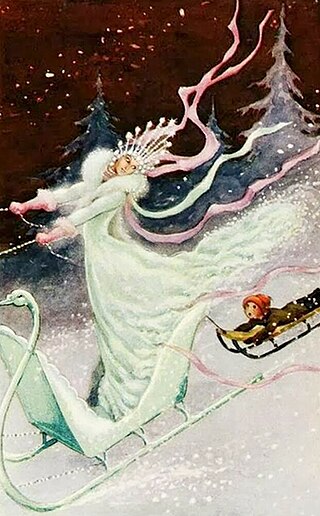
"The Snow Queen" is an 1844 original fairy tale by Danish author Hans Christian Andersen. It was first published 21 December 1844 in New Fairy Tales. First Volume. Second Collection. The story centers on the struggle between good and evil as experienced by Gerda and her friend, Kai. Unlike Andersen's other stories, The Snow Queen is written in a novel-styled narrative, being divided into seven chapters.
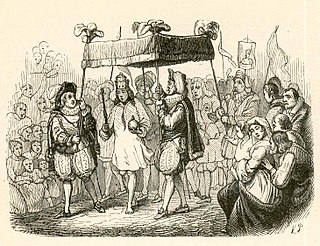
"The Emperor's New Clothes" is a literary folktale written by Danish author Hans Christian Andersen, about a vain emperor who gets exposed before his subjects. The tale has been translated into over 100 languages.

"The Little Mermaid", sometimes translated in English as "The Little Sea Maid", is a fairy tale written by Danish author Hans Christian Andersen. Originally published in 1837 as part of a collection of fairy tales for children, the story follows the journey of a young mermaid princess who is willing to give up her life in the sea as a mermaid to gain a human soul.

"The Little Match Girl" is a literary fairy tale by Danish poet and author Hans Christian Andersen. The story, about a dying child's dreams and hope, was first published in 1845. It has been adapted to various media, including animated, live-action, and VR films as well as television musicals and opera.

"The Steadfast Tin Soldier" is a literary fairy tale by Hans Christian Andersen about a tin soldier's love for a paper ballerina. The tale was first published in Copenhagen by C.A. Reitzel on 2 October 1838 in the first booklet of Fairy Tales Told for Children. New Collection. The booklet consists of Andersen's "The Daisy" and "The Wild Swans". The tale was Andersen's first not based upon a folk tale or a literary model. "The Steadfast Tin Soldier" has been adapted to various media including ballet and animated film.

"The Shadow" is a literary fairy tale by Danish poet and author Hans Christian Andersen. The tale was first published in 1847.
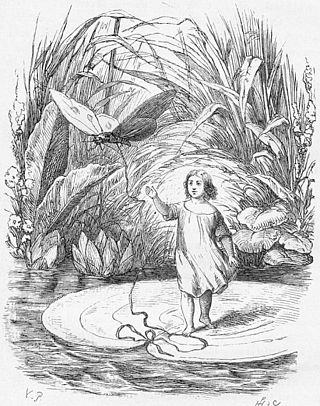
Thumbelina is a literary fairy tale written by the famous Danish author Hans Christian Andersen. It was first published by C. A. Reitzel on 16 December 1835 in Copenhagen, Denmark, with "The Naughty Boy" and "The Travelling Companion" in the second installment of Fairy Tales Told for Children. Thumbelina is about a tiny girl and her adventures with marriage-minded toads, moles, and cockchafers. She successfully avoids their intentions before falling in love with a flower-fairy prince just her size.

"The Princess and the Pea" is a literary fairy tale by Hans Christian Andersen about a princess who is tested to become the wife to a lonely prince. The tale was first published with three others by Andersen in a cheap booklet on 8 May 1835 in Copenhagen by C. A. Reitzel.

"The Wild Swans" is a literary fairy tale by Hans Christian Andersen about a princess who rescues her 11 brothers from a spell cast by an evil queen. The tale was first published on 2 October 1838 in Andersen's Fairy Tales Told for Children. New Collection. First Booklet by C. A. Reitzel in Copenhagen, Denmark. It has been adapted to various media including ballet, television, and film.

"The Red Shoes" is a literary fairy tale by Danish poet and author Hans Christian Andersen first published by C.A. Reitzel in Copenhagen 7 April 1845 in New Fairy Tales. First Volume. Third Collection. Other tales in the volume include "The Elf Mound" (Elverhøi), "The Jumpers" (Springfyrene), "The Shepherdess and the Chimney Sweep", and "Holger Danske".
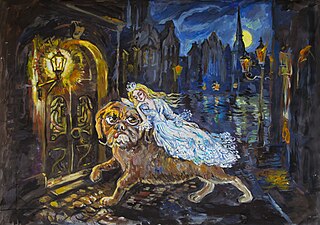
"The Tinderbox" is a literary fairy tale by Hans Christian Andersen about a soldier who acquires a magic tinderbox capable of summoning three powerful dogs to do his bidding. When the soldier has one of the dogs transport a sleeping princess to his room, he is sentenced to death but cunningly summons the dogs to save his life.
"The Fir-Tree" is a literary fairy tale by the Danish poet and author Hans Christian Andersen (1805–1875). The tale is about a fir tree so anxious to grow up, so anxious for greater things, that he cannot appreciate living in the moment. The tale was first published 21 December 1844 with "The Snow Queen", in New Fairy Tales. First Volume. Second Collection, in Copenhagen, Denmark, by C.A. Reitzel. One scholar indicates that "The Fir-Tree" was the first of Andersen's fairy tales to express a deep pessimism.
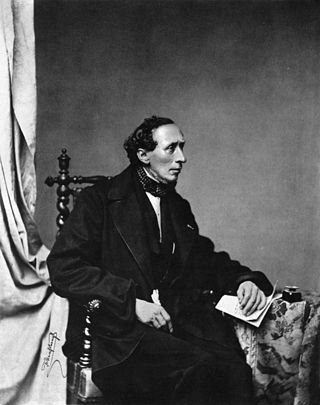
"The Snowman" is a literary fairy tale by Hans Christian Andersen about a snowman who falls in love with a stove. It was published by C.A. Reitzel in Copenhagen as Sneemanden on 2 March 1861. Andersen biographer Jackie Wullschlager describes the tale as a lyrical and poignant complement to Andersen's "The Fir-Tree" of December 1844.

Fairy Tales Told for Children. First Collection. is a collection of nine fairy tales by Hans Christian Andersen. The tales were published in a series of three installments by C. A. Reitzel between May 1835 and April 1837, and represent Andersen's first venture into the fairy tale genre.

"The Galoshes of Fortune" is a literary fairy tale by Hans Christian Andersen about a set of time-travelling boots, considered to be inspired by the folktale of the "seven-league boots" (syvmilestøvler).

"The Garden of Paradise" is a literary fairy tale by Hans Christian Andersen first published by C. A. Reitzel in Copenhagen, Denmark on 19 October 1839 with "The Flying Trunk" and "The Storks" in Fairy Tales Told for Children. New Collection. Second Booklet. Maximilian II of Bavaria read and liked the tale. Andersen biographer Jackie Wullschlager considers the story and its two companion pieces in the booklet as "grim". "The Garden of Paradise" ends with Death approaching a young prince and warning him to expiate his sins for, one day, he will come for him and "clap him in the black coffin".

New Fairy Tales. First Volume is a collection of nine fairy tales by Hans Christian Andersen. The tales were published in a series of three installments by C. A. Reitzel in Copenhagen, Denmark between November 1843 and April 1845.

Fairy Tales Told for Children. New Collection is a collection of ten fairy tales by Hans Christian Andersen. The tales were published in a series of three installments by C. A. Reitzel in Copenhagen, Denmark between October 1838 and December 1841.

The Snow Queen is an opera by Hans Abrahamsen and was commissioned by the Royal Danish Opera. The world premiere in Danish took place on 13 October 2019 in Copenhagen. On 21 December 2019 the English version was premiered at the Bavarian State Opera in Munich. The work is based on the fairy tale "The Snow Queen" by Hans Christian Andersen and the libretto is by Hans Abrahamsen and Henrik Engelbrecht.



















